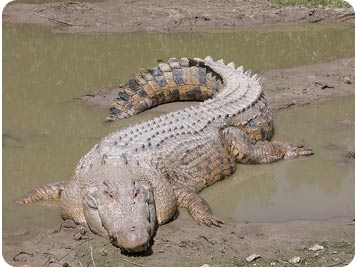Radio Program
Our regular Science and the SeaTM radio program presents marine science topics in an engaging two-minute story format. Our script writers gather ideas for the radio program from the University of Texas Marine Science Institute's researchers and from our very popular college class, Introduction to Oceanography, which we teach to hundreds of non-science majors at The University of Texas at Austin every year. Our radio programs are distributed at to commercial and public radio stations across the country.
Humpback whales are some of the smartest creatures in the oceans. They sometimes catch fish as teams, and they “sing” complex songs that probably play a role in mating. And their brains have several things in common with the human brain -- including different roles for the two sides of the brain.
Humpbacks are among the oceans’ giants. Adults grow up to 50 feet long, and weigh about 40 tons. They feed by filtering small fish and other organisms from the water.
The Atlantic oyster drill is well named. The inch-long snail climbs on top of an oyster, pours a chemical solvent on the oyster’s shell, then drills a tiny hole. After that, it inserts a tube and sucks out the tasty meat, leaving nothing but an empty shell.
Part of the name, though, isn’t quite as accurate as it used to be. The Atlantic oyster drill has invaded bays along the Pacific coast, too. In California, the snail is plowing through native oysters in a hurry.
When you hold your thumb over the end of a garden hose, the flow changes from a gentle stream to a high-speed jet. The same amount of water is trying to escape through a smaller opening, so it has to move faster.
The same thing happens off the tip of South America. An ocean current that circles the globe squeezes through a 500-mile-wide gap known as the Drake Passage. The current not only speeds up, it also creates powerful eddies. Combined with strong winds and violent storms, that makes the Drake Passage one of the roughest patches of sea on Earth.
It’s as long as a pickup truck and half as heavy. It strikes like lightning, killing with its powerful jaws or dragging its victim into the depths to drown. And it’s not picky about what it eats -- anything from a turtle to a human being suits it just fine.

The nudibranch looks like it ought to be an easy meal for just about any ocean predator. It’s basically a small, colorful, slow-moving blob of flesh with no shell or great big teeth to protect it.
Yet when most predators see a nudibranch, they keep on moving. That’s because the nudibranch’s defense is based on an old principle: waste not, want not. It basically reuses the defense mechanisms of the organisms it eats.
In late 1942, the Queen Mary was carrying 15,000 American troops across the Atlantic to join the war in Europe. German U-boats couldn’t catch her, and even a stiff gale wasn’t a problem for the mammoth ocean liner.
But 700 miles off the coast of Scotland, a wall of water more than 90 feet tall broadsided the ship, almost knocking it on its side. Water poured onto the decks, and just a few more degrees of list would have capsized her. But the Queen slowly righted herself and delivered her passengers to the British Isles.
One of the most colorful creatures in the oceans can see colors better than just about any other animal. In fact, the mantis shrimp may have the most complicated eyes of any creature on Earth.
Many organisms have developed unusual eyes to help them see in the dark marine environment. Many of them can see wavelengths of light that are invisible to human eyes, for example. And they can detect the direction in which light waves move -- a handy tool for enhancing contrast and detecting subtle motion.
For the young -- and the young at heart -- the highlight of many a trip to the coast is a visit to a tide pool. Each little universe of life might hold starfish, crabs, shrimp, sponges, or many other colorful species. Birds and mammals wade in to grab lunch, while a coating of algae makes the whole thing as slippery as an ice-skating rink.
A deadly menace lurks on American beaches. It strikes without warning, and from 1990 through 2006, it killed at least 16 people. Yes, you’ve probably already guessed what it is: collapsing sand holes. Sharks, on the other hand, killed only 11 -- they just got more airtime.
People have been using sound to probe the ocean depths for decades. Navies track ships and submarines. Archaeologists hunt for sunken cities. Oceanographers measure ocean currents, and geologists map the ocean floor.
And in the decades to come, marine biologists may use sound to probe ocean life like never before. For example, scientists studying microscopic creatures in the upper layers of the oceans may be able to identify the different kinds without disturbing their subjects.

